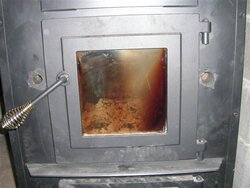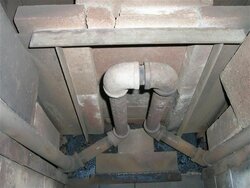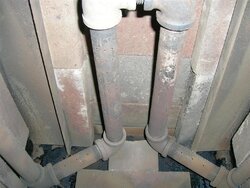We're rolling into our first winter using a wood furnace as our primary heat source and Hearth.com has been an awesome resource. Thank you, all!
Our furnace is a new Vogelzang Norseman 2500 that was installed in the house last fall before we bought the property. If I'd had my choice, I likely would have gone with something more advanced and efficient like the Wood Chuck or a Yukon, but since we have the Norseman we'll stick with it.
As a former woodstove user, my biggest complaint is that the 'secondary burn chamber' is simply an airspace separated from the firebox by two steel plate baffles. There's no secondary air supply and I'm sure that we're losing a huge amount of our potential energy through the flue and chimney. Granted, the few times we ran it in early spring we had fairly efficient burns based on the vapor-only chimney emissions, but those were hot, short fires for the shoulder season.
Does anyone have any experience with the risks and rewards of trying to plumb a secondary burn air supply into the top of a furnace like ours? I'm waffling back and forth between, "I don't even want to think about it" and "I don't want to waste a single drop of energy from the wood we put up this year".
Our furnace is a new Vogelzang Norseman 2500 that was installed in the house last fall before we bought the property. If I'd had my choice, I likely would have gone with something more advanced and efficient like the Wood Chuck or a Yukon, but since we have the Norseman we'll stick with it.
As a former woodstove user, my biggest complaint is that the 'secondary burn chamber' is simply an airspace separated from the firebox by two steel plate baffles. There's no secondary air supply and I'm sure that we're losing a huge amount of our potential energy through the flue and chimney. Granted, the few times we ran it in early spring we had fairly efficient burns based on the vapor-only chimney emissions, but those were hot, short fires for the shoulder season.
Does anyone have any experience with the risks and rewards of trying to plumb a secondary burn air supply into the top of a furnace like ours? I'm waffling back and forth between, "I don't even want to think about it" and "I don't want to waste a single drop of energy from the wood we put up this year".





